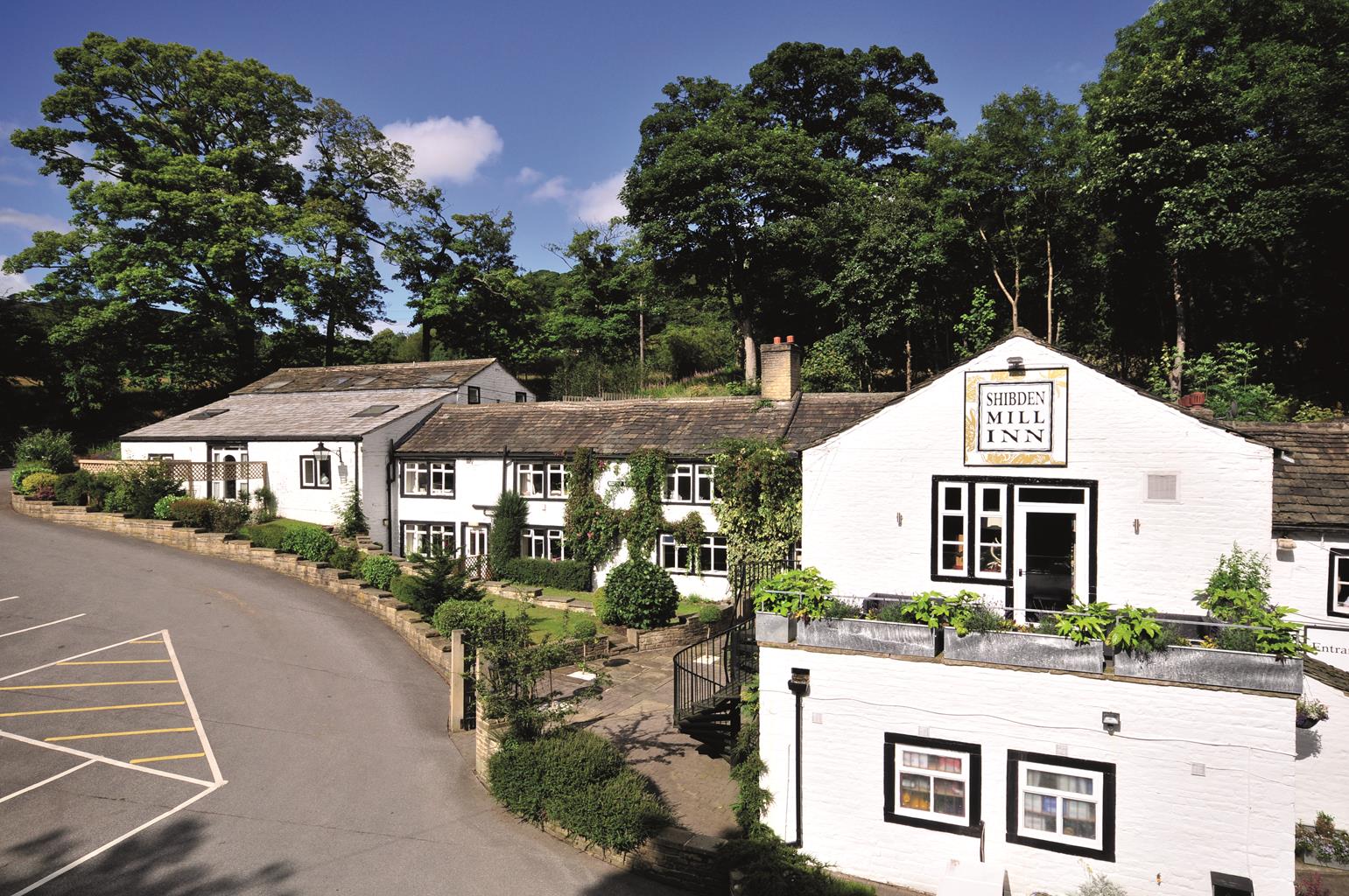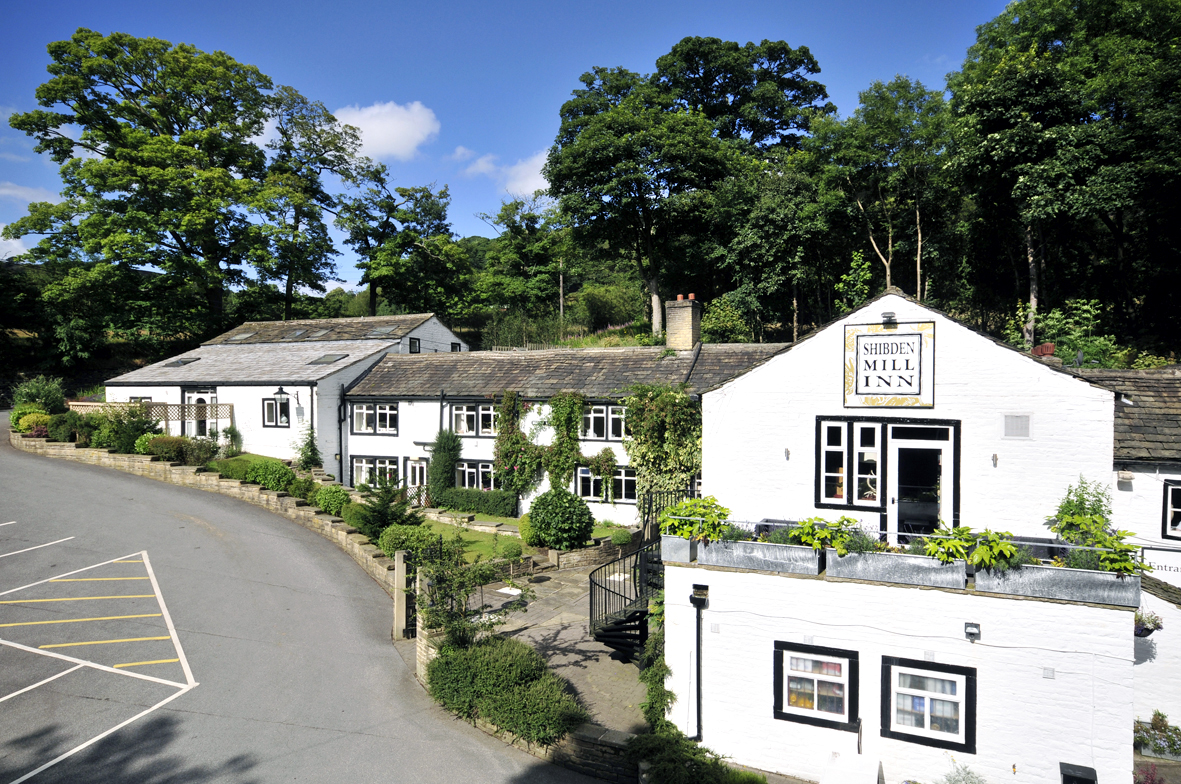The Great Victoria Hotel was built in 1867 as a Railway Hotel. Centrally located opposite…
Bradford: Undercliffe Cemetery

Even in death the Victorians believed they should be looked up to
1 miles (1.6kms)
About the walk
Undercliffe Cemetery is unlike any other. Here, gathered within the 25-acre (10ha) grounds of a former mansion, are some of the most spectacular examples of over-the-top Victorian funereal practice to be found anywhere. From towering obelisks to Egyptian tombs, Celtic crosses to mausoleums that wouldn’t look too out of place in Vatican City, Bradford’s wealthiest inhabitants – and many not-so-wealthy tradesmen – spared little expense in ensuring they and their nearest and dearest would be remembered long after they departed this mortal coil.
The Bradford Cemetery Company began interring people at Undercliffe in 1854. A notice in the Bradford Guardian at the time, which declared that ‘the views of the surrounding country from various portions of the ground are not to be surpassed in the neighbourhood of Bradford’, was no exaggeration. Stand by the Smith Monument at the western end of the cemetery and the whole of the city is spread out at your feet, and you’re given a clear view of how Bradford’s urban sprawl is actually surrounded by high moorland, with views extending north to Baildon Moor and west to Ovenden Moor, above Halifax.
Location, location, location
The cemetery was opened to cater for demand, as Bradford’s textile industry success led its population to rise almost eight-fold within half a century. Death rates were high, due to poor working environments and insanitary living conditions. Life expectancy for labourers was 17 years. The pressure on existing church graveyards was such that bones protruded from the ground. Burial prices within Undercliffe Cemetery depended on location. The most expensive spots lined a grand promenade running east to west. Among the great and the good buried there are Robert Milligan, merchant and first mayor of Bradford; Sir Jacob Behrens, another successful merchant; and architect William Mawson, who designed some of Bradford’s most important buildings, including City Hall and the Wool Exchange.
One of the joys of exploring Undercliffe, however, is finding the memorials, not only to those great and the good, but to the city’s tradesmen such as plumbers, saddlers and ironmongers; to soldiers who fell at battlegrounds such as Ypres; to the puppeteer, the surgeon, the theatre manager and the fishmonger’s wife. Or poor Fred Greenwood Smith, who died in a tram accident in Girlington in 1889.
After the site was threatened by development in the 1980s it was taken into the care of the Undercliffe Cemetery Charity, which carries out conservation work, runs education programmes and produces guides and newsletters. The cemetery, which holds the remains of more than 123,500 Bradfordians in more than 23,000 graves, still accepts burials today. Whether you go there to admire the monuments or simply to take exercise, you’ll be that bit closer to heaven in this spiritually uplifting place.
Walk directions
From the gatehouse, turn left on to a grassy path. Swing right in front of the tribute to surgeon Thomas Beaumont, then left, by the monument to John Robertshaw, along a grassy path. Keep ahead, past a mound bearing a small yew, then bear right along the perimeter path and mount steps to the towering Smith monument. The view from here goes some way to explaining its attraction as a burial place for the city’s most prominent citizens. Just as you can see across the entire city of Bradford, away to the moors of Ovenden and Baildon, so the populations of those places could look to the resting places of those who regarded themselves as Bradford’s leading lights.
Head down the main drive from here for 110yds (100m), then bear left, between the Gurney and Feather monuments, down to a grassy crossroads. Turn right, past John and Clara Nicholls, and bear right at a fork, to some steps.
Climb these and keep ahead into what is referred to as the historic core. Here you’ll find some of the most impressive monuments, tombs and mausoleums in the entire cemetery. Climb the steps out of the historic core and turn left along the main promenade.
Bear left at a fork, along a surfaced track. After just 33yds (30m) bear right, on a grassy track past the memorial to puppet theatre proprietor Walter Calver, who performed for Queen Victoria. Encountering the perimeter path again, turn right back to the main promenade. Follow this for 185yds (170m) – past a splendid monument to the memory of a Bradford fishmonger’s wife – to turn left on to another surfaced track, back to the start.
Additional information
Surfaced tracks and well-maintained grassy paths
Cemetery paths
Dogs should be under control at all times and mess removed
OS Explorer 288 Bradford & Huddersfield
Car parks in Undercliffe Lane and Otley Road; on-street parking near by
None on route
<p>Car parks close at 4.30pm, or 4pm on bank holidays and weekends</p>
WALKING IN SAFETY
Read our tips to look after yourself and the environment when following this walk.
Find out more
Also in the area
About the area
Discover
Nearby stays
Restaurants and Pubs
Nearby experiences
Recommended things to do
Why choose Rated Trips?
Your trusted guide to rated places across the UK
The best coverage
Discover more than 15,000 professionally rated places to stay, eat and visit from across the UK and Ireland.
Quality assured
Choose a place to stay safe in the knowledge that it has been expertly assessed by trained assessors.
Plan your next trip
Search by location or the type of place you're visiting to find your next ideal holiday experience.
Travel inspiration
Read our articles, city guides and recommended things to do for inspiration. We're here to help you explore the UK.













